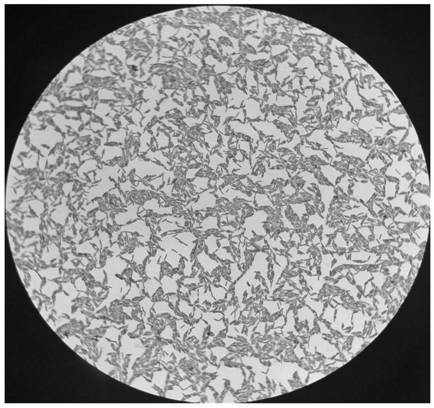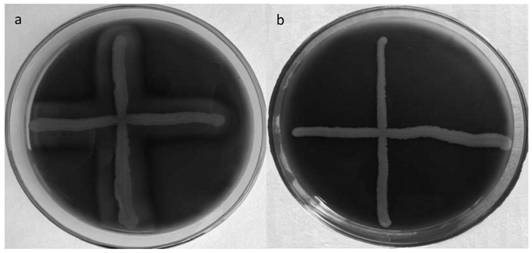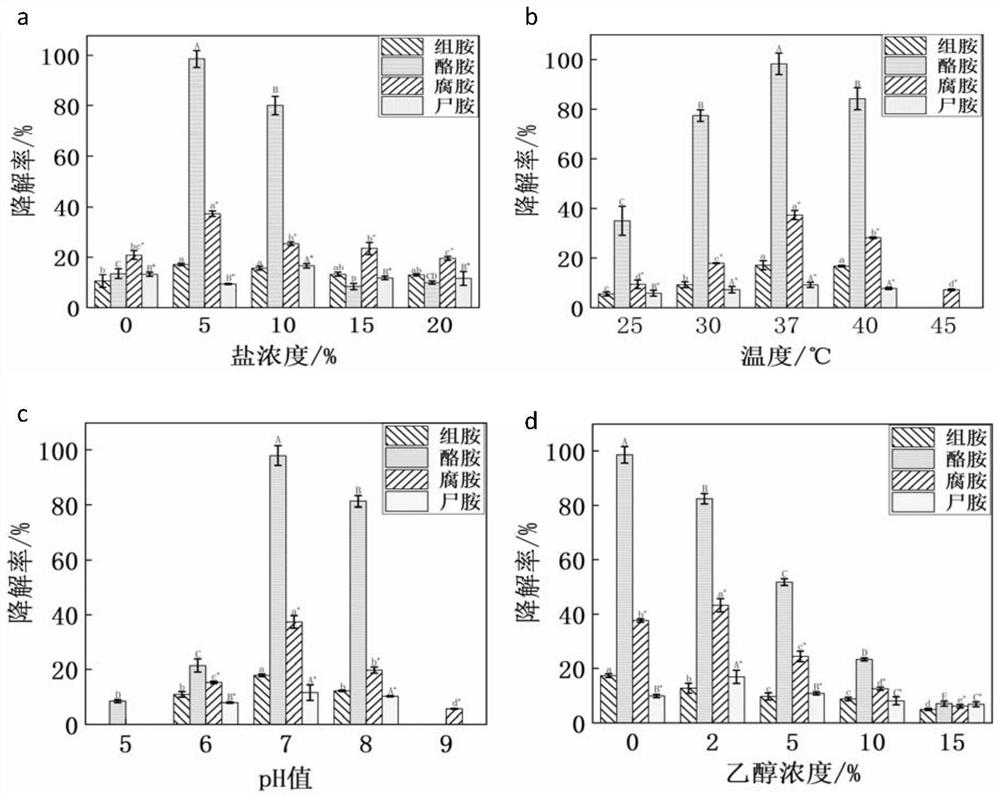Biogenic amine degrading bacterium for improving poor fermented flavor of shrimp paste and application thereof
A technology of unfavorable flavor and biogenic amines, which is applied in the field of microorganisms to achieve the effects of reducing accumulation, improving unfavorable flavor and improving quality
- Summary
- Abstract
- Description
- Claims
- Application Information
AI Technical Summary
Problems solved by technology
Method used
Image
Examples
Embodiment 1
[0031] Example 1 Screening of biogenic amine-degrading bacteria
[0032]Biogenic amine-degrading bacteria were screened from the strains isolated from grasshopper shrimp paste in the early stage, and a total of 442 halophilic bacteria were isolated. After 16S rRNA gene identification, 103 bacteria belonging to 46 genera were obtained (Sang, X. , Ma, X.X., Hao, H.S, Bi, J.R., Zhang, G.L & Hou, H.M. (2020). Evaluation of biogenic amines and microbial composition in the Chinese traditional fermented food grasshoppersub shrimp paste. LWT, 134, 109979.). Screen decarboxylase-negative bacteria from these 103 kinds of bacteria, use an inoculation loop to pick a single colony in LB solid medium, and then in a liquid decarboxylase medium containing histidine, tyrosine, lysine and ornithine (Ingredients: tryptone 5g, yeast powder 5g, beef extract 5g, glucose 0.5g, sodium chloride 2.5g, Tween 80 1mL, magnesium sulfate 0.2g, manganese sulfate 0.05g, ferrous sulfate 0.04g, ammonium citrate...
Embodiment 2
[0033] Morphological observation of embodiment 2 pantothenic mycobacterium (Virgibacillus pantothenicus)
[0034] The Gram staining method includes four steps of primary staining, mordant staining, decolorization, and counterstaining. The specific method is as follows: the smear of Virgibacillus pantothenicus was fixed, stained with ammonium oxalate crystal violet for 1 min, rinsed with distilled water, and then washed with iodine. Dye for about 1 minute, wash with water, absorb water with absorbent paper, add a few drops of 95% alcohol, and shake gently to decolorize, wash with water after 20 seconds, absorb water, dye with safranin staining solution for 1 minute, rinse with distilled water , dried, and examined under a microscope.
[0035] The result is as figure 1 As shown, Mycobacillus pantothenica is rod-shaped in shape, and its physiological characteristics are Gram-positive.
Embodiment 3
[0036] Example 3 Degradation of biogenic amine by Virgibacillus pantothenticus
[0037] Inoculate Virgibacillus pantothenicus (Virgibacillus pantothenicus) in 100mL LB liquid medium with an inoculum amount of 1% (v / v), culture at 37°C and 150r / min for 24h (bacteria liquid), and collect bacteria by centrifugation at 4°C and 4000g for 10min body, washed twice with 0.05mol / L pH=7.0 phosphate buffer, then resuspended the bacteria to 20mL salt containing four biogenic amines (500mg / L each for histamine, tyramine, putrescine and cadaverine concentrations) ( Sodium chloride, add) in the phosphate buffer saline (0.05mol / L, pH=7.0) of mass concentration 5%, adjust the bacterial suspension concentration to be OD 600nm =0.8, and then cultivated at 37°C and 150r / min for 48h. The control group was 20 mL of 5% phosphate buffer (0.05 mol / L, pH=7.0) containing 500 mg / L of each of the four biogenic amines (sodium chloride, plus) and cultured for 48 hours under the same conditions. After the ...
PUM
 Login to View More
Login to View More Abstract
Description
Claims
Application Information
 Login to View More
Login to View More - Generate Ideas
- Intellectual Property
- Life Sciences
- Materials
- Tech Scout
- Unparalleled Data Quality
- Higher Quality Content
- 60% Fewer Hallucinations
Browse by: Latest US Patents, China's latest patents, Technical Efficacy Thesaurus, Application Domain, Technology Topic, Popular Technical Reports.
© 2025 PatSnap. All rights reserved.Legal|Privacy policy|Modern Slavery Act Transparency Statement|Sitemap|About US| Contact US: help@patsnap.com



